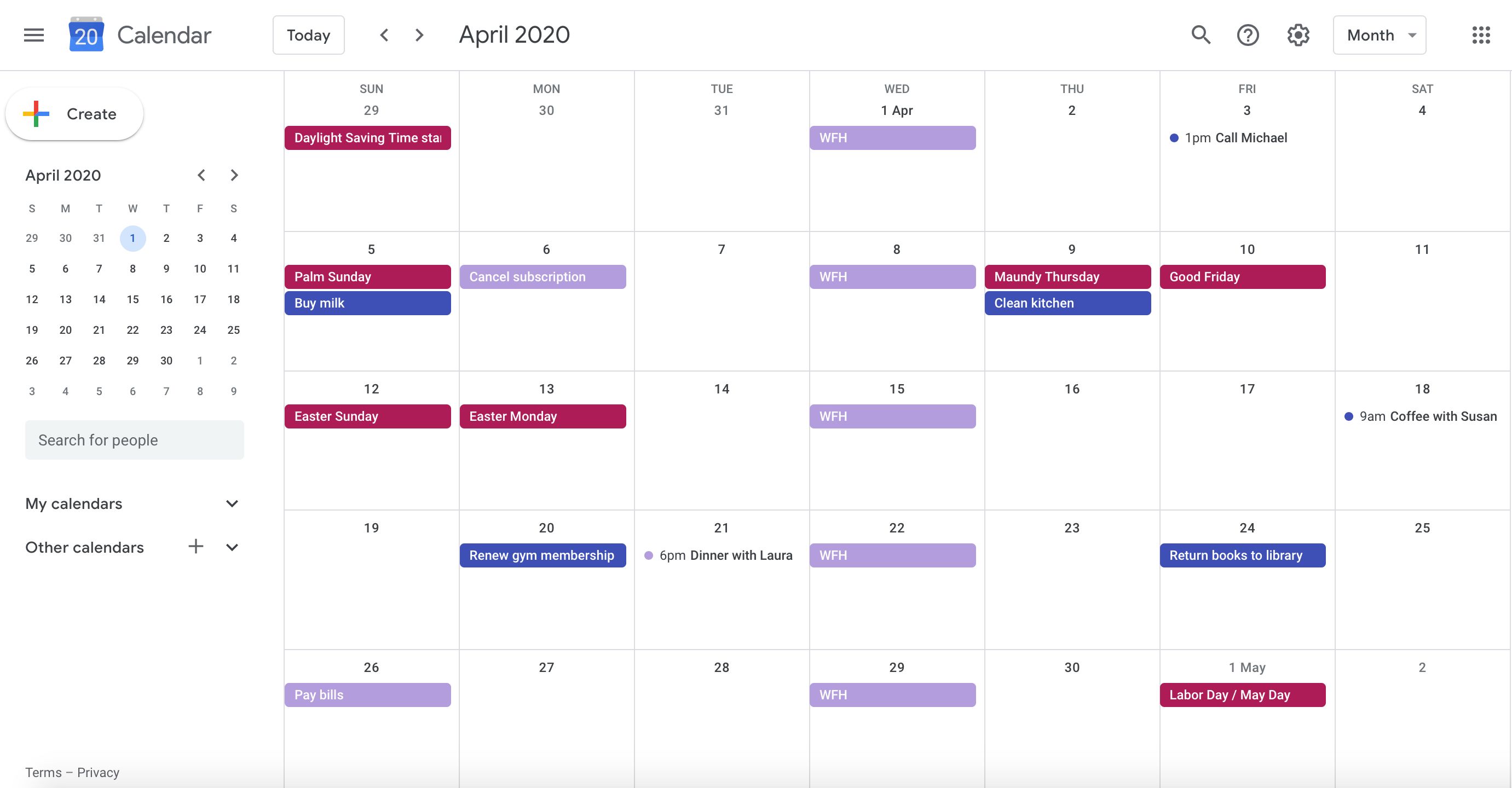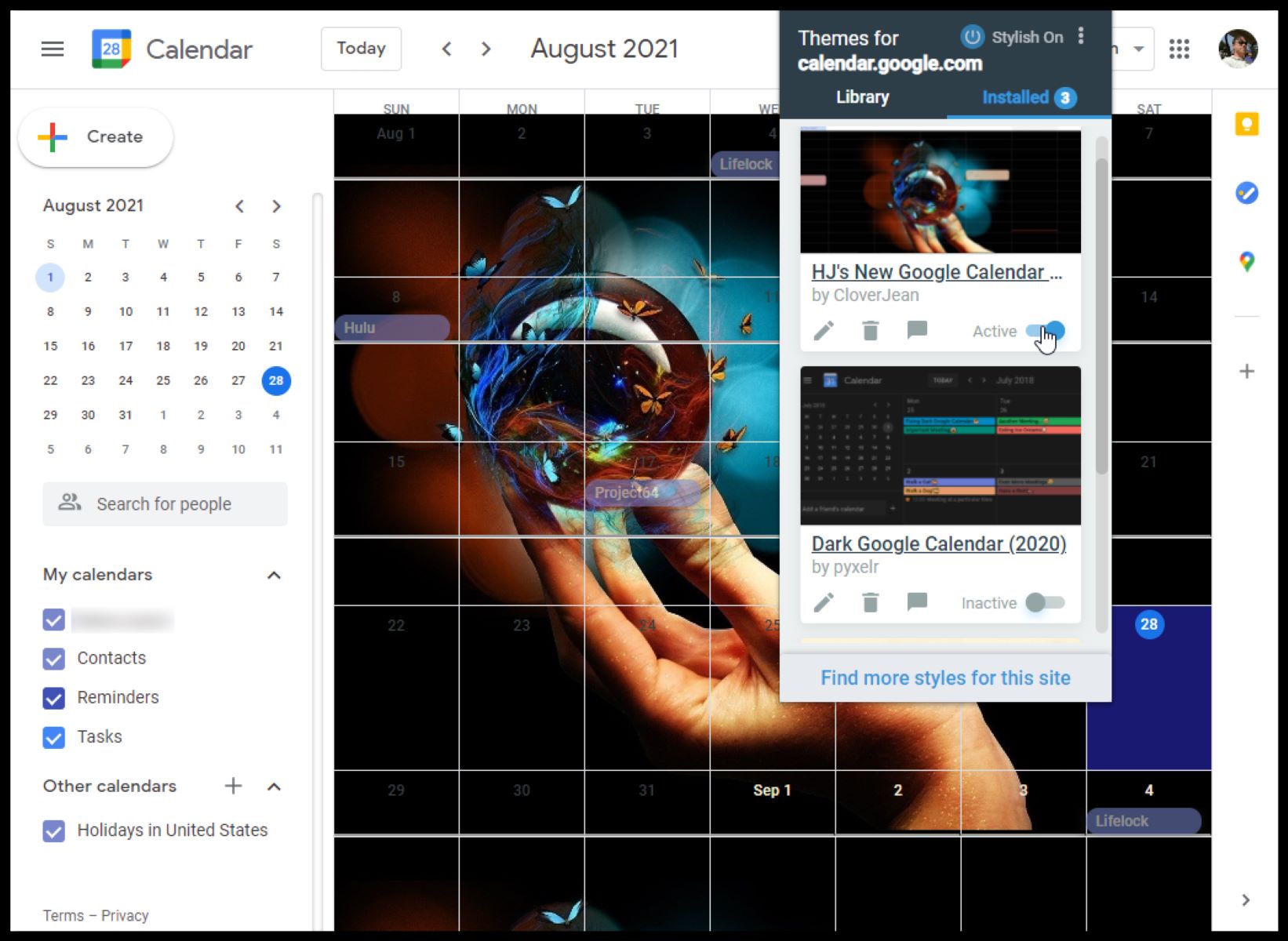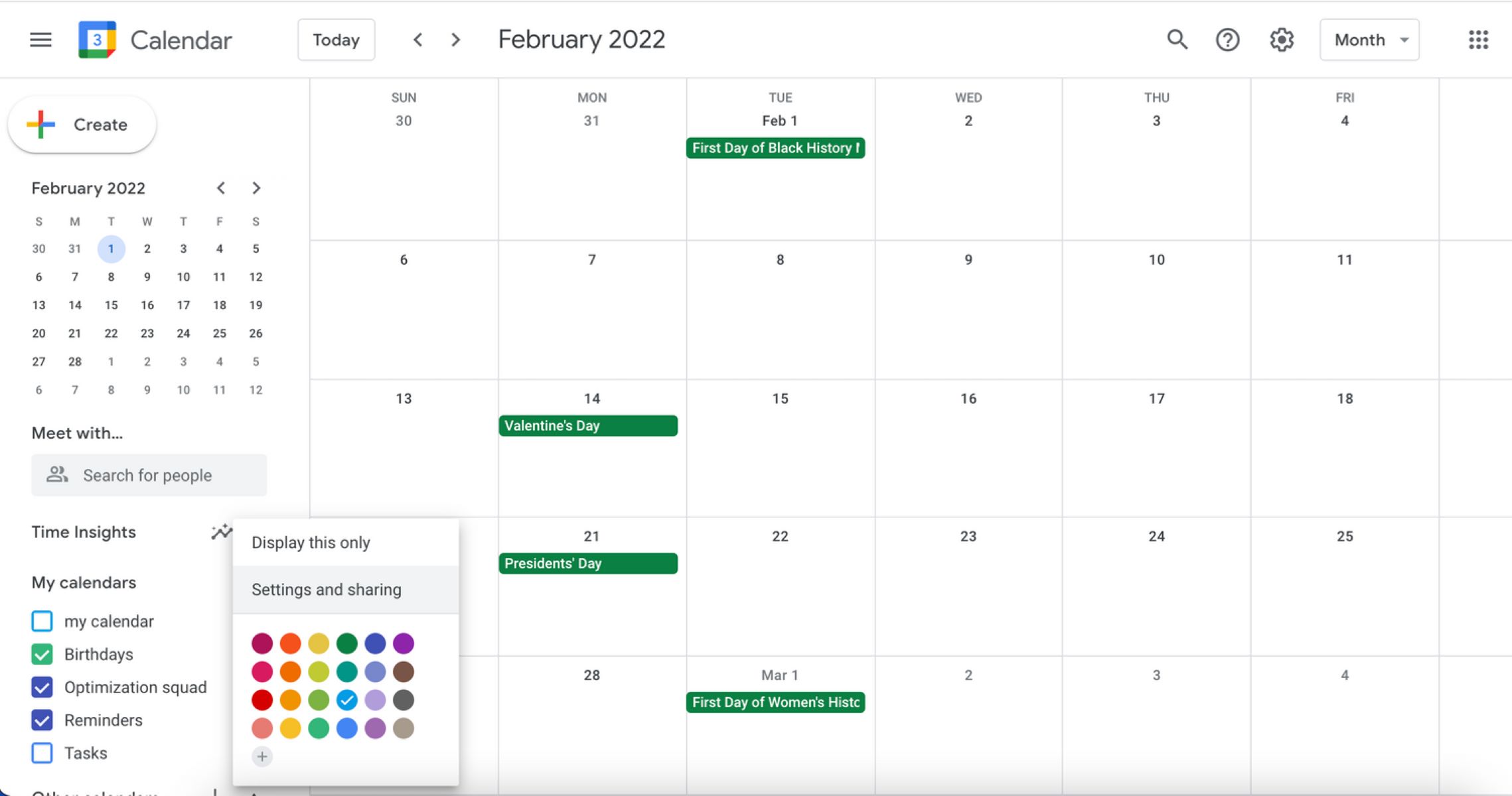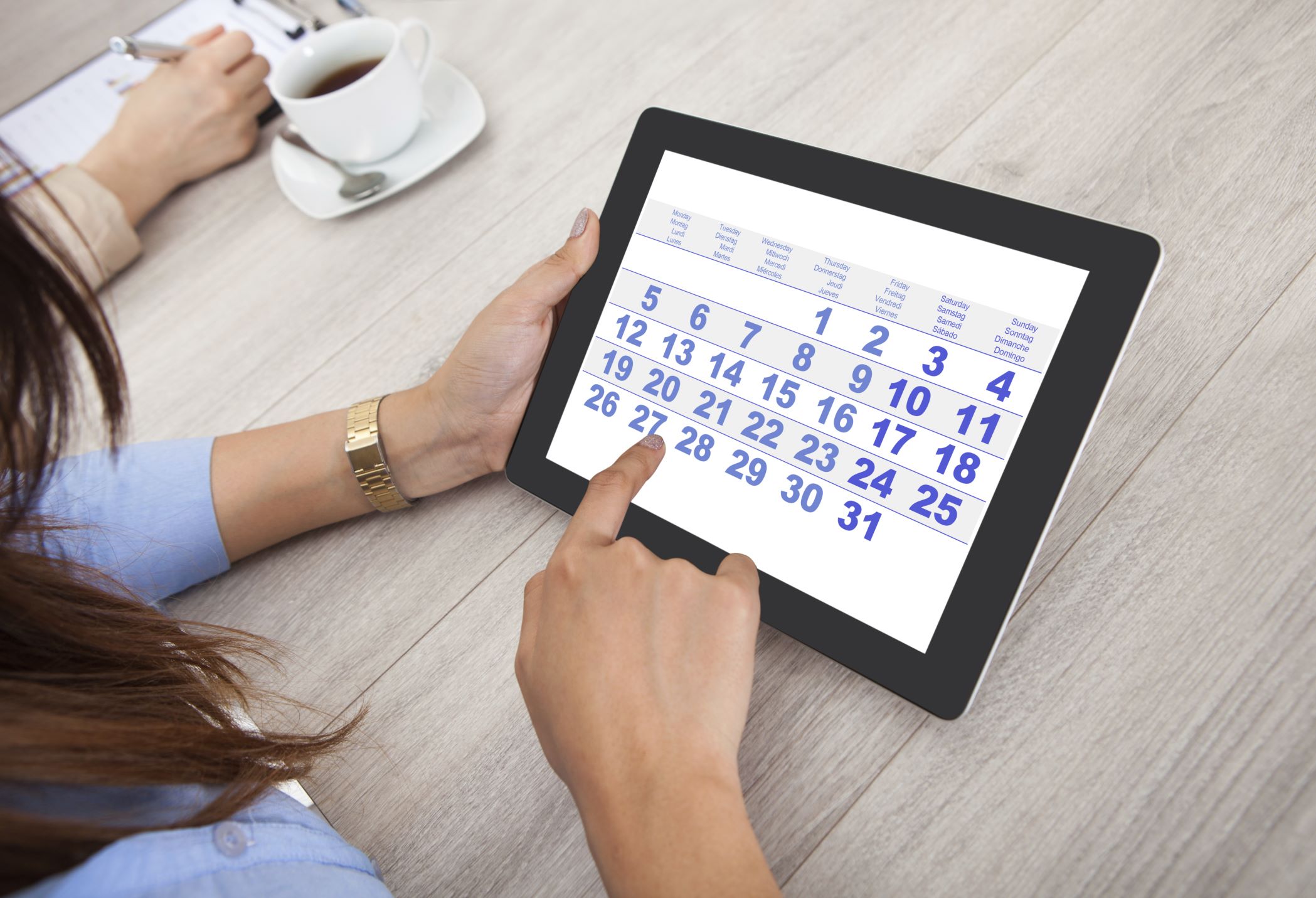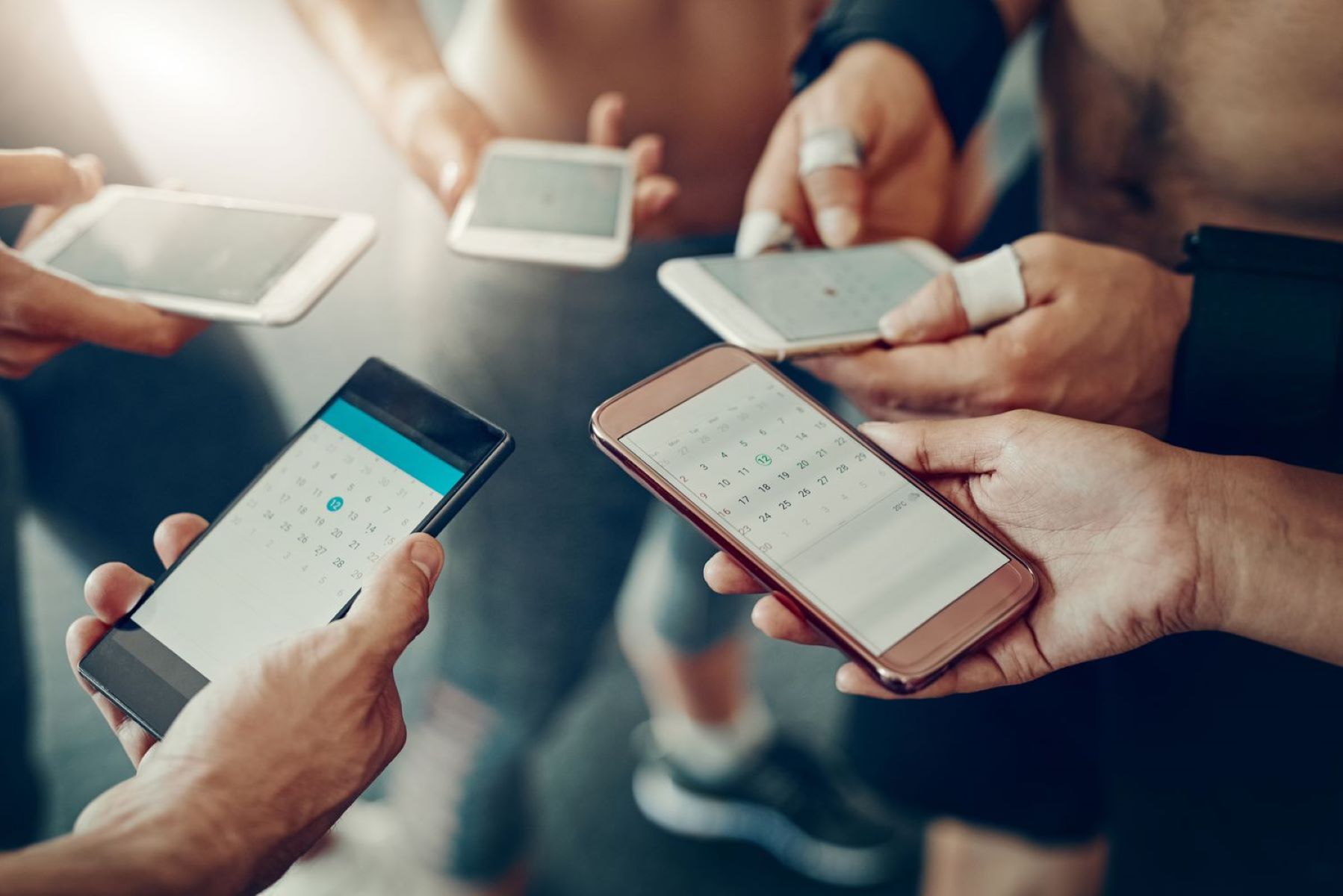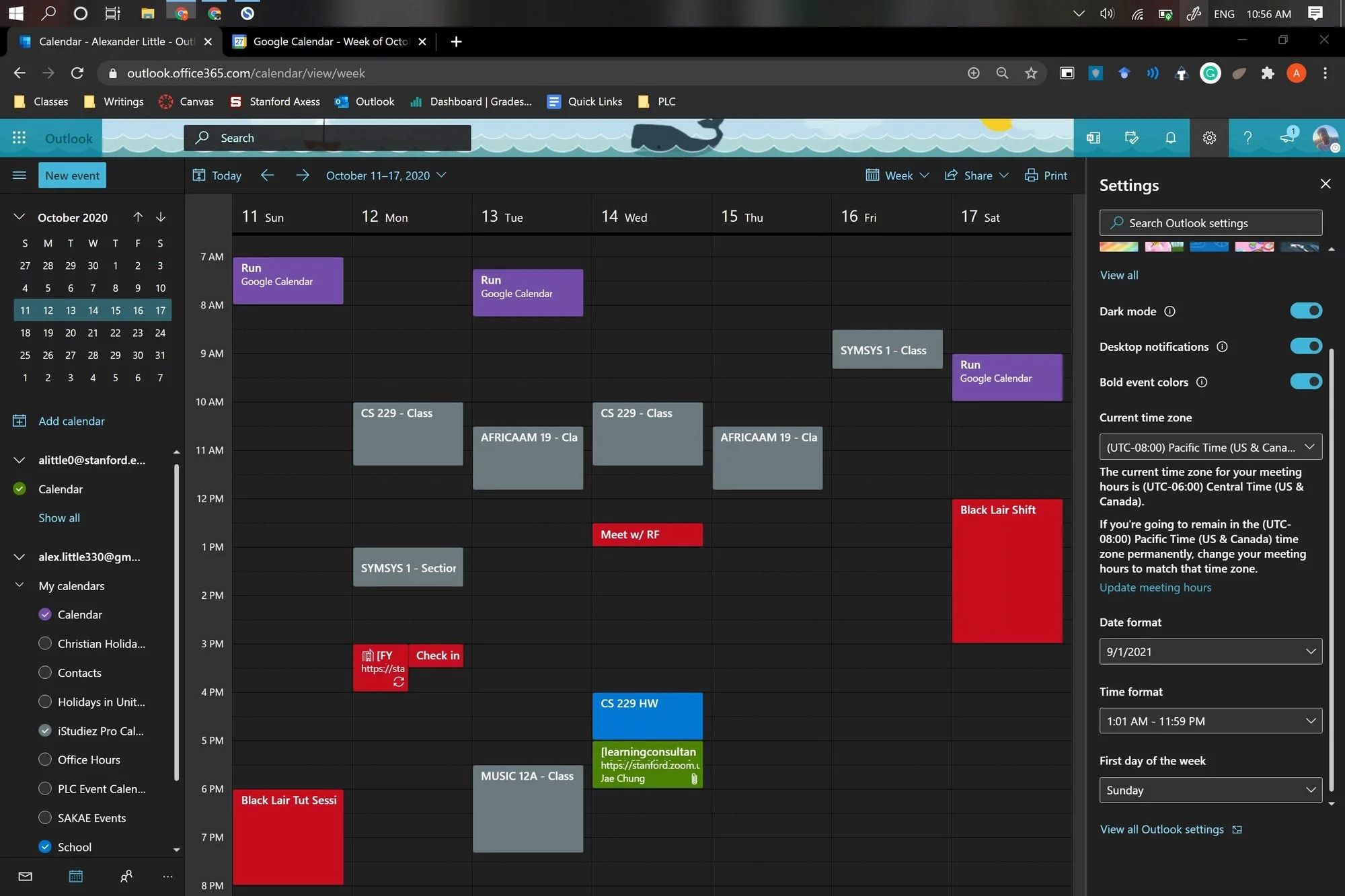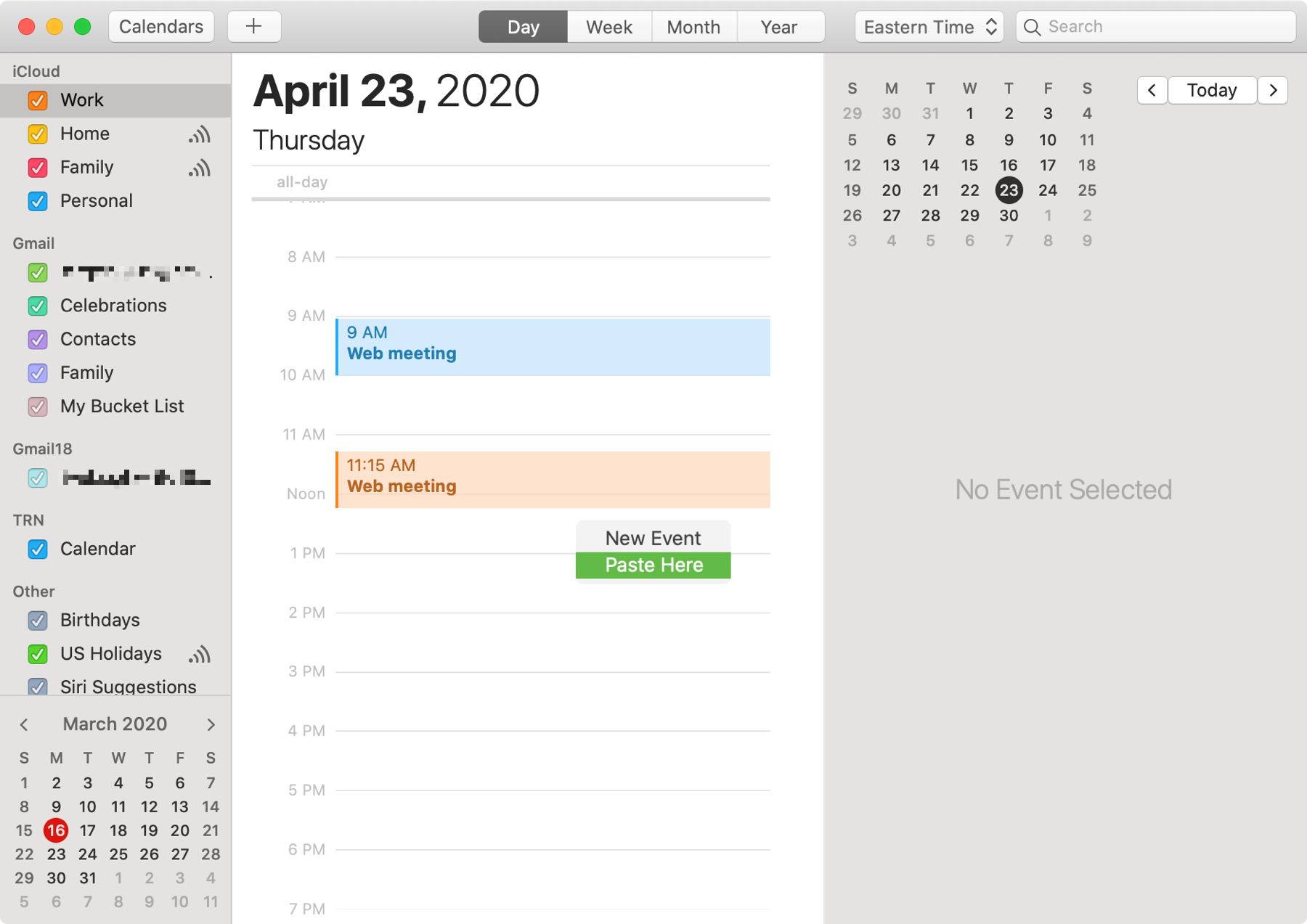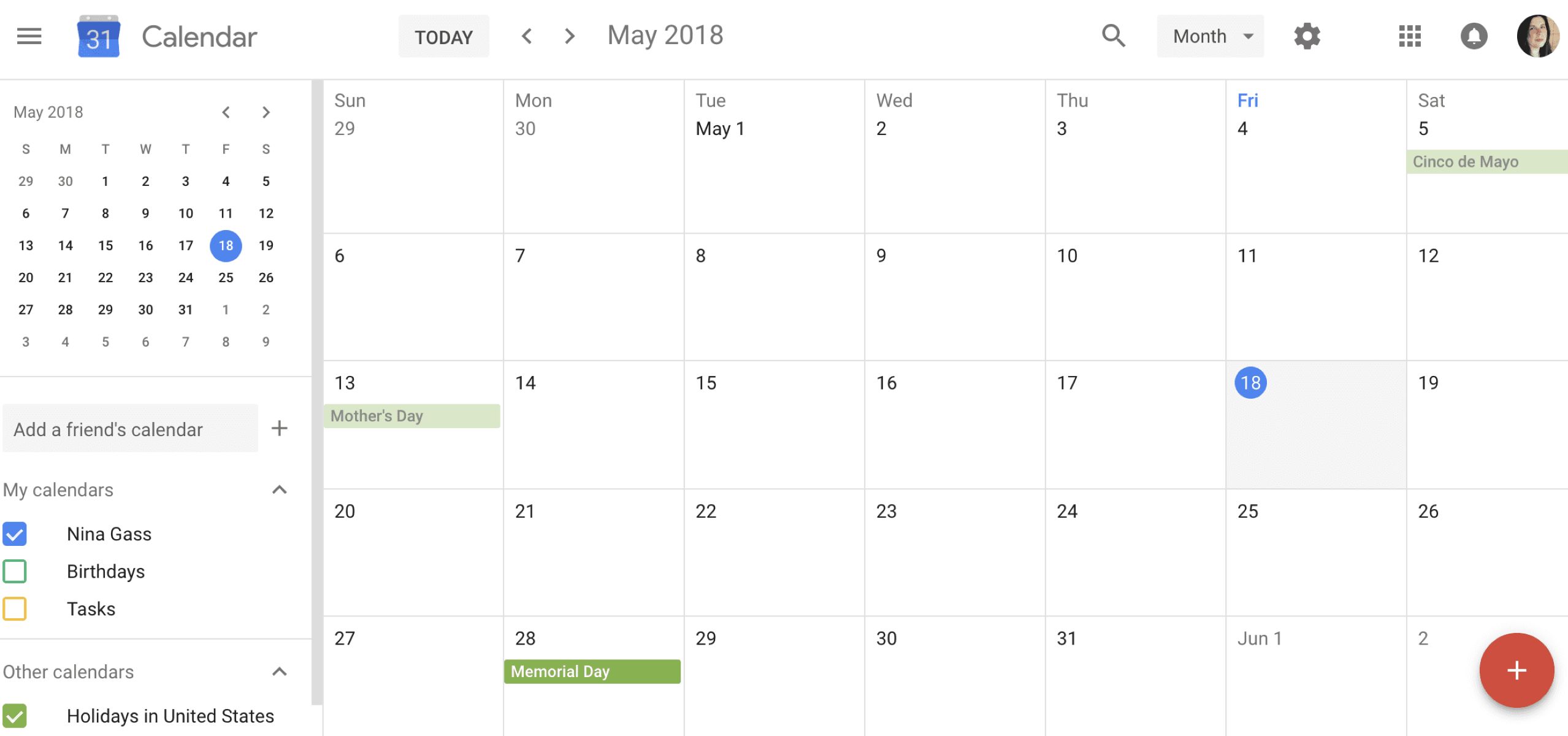Introduction:
Google Calendar is a powerful tool that helps you stay organized and manage your schedule efficiently. With its intuitive interface and customizable settings, you can personalize your calendar to suit your needs. From adjusting general settings to managing notifications and appearances, Google Calendar offers a wide range of options that can be tailored to your preferences.
In this article, we will explore how to change your Google Calendar settings and make the most out of this versatile tool. Whether you are a busy professional, a student, or simply someone looking to streamline your daily activities, understanding how to optimize Google Calendar will help you stay on top of your commitments and appointments.
By diving into the various settings available, you can customize your calendar to reflect your unique work style and priorities. From syncing your calendar on multiple devices to managing event notifications, you’ll discover how to enhance your productivity and ensure no task or appointment goes unnoticed.
So, if you’re ready to take full advantage of Google Calendar’s features and make it work seamlessly for your schedule, let’s delve into the world of settings and explore how you can effectively customize your calendar according to your needs.
Accessing Google Calendar Settings:
Before we delve into the various settings, let’s first understand how to access the Google Calendar settings menu. Follow these simple steps:
- Open your web browser and navigate to Google Calendar.
- Sign in to your Google account if you haven’t already.
- Once you are signed in, you will see the main calendar interface.
- In the top-right corner of the screen, locate the gear icon. Click on it to open the settings menu.
Now that you know how to access the Google Calendar settings, let’s move on to the different options and features available to customize your calendar.
(Optional) To access Google Calendar settings on the mobile app:
- Open the Google Calendar app on your smartphone or tablet.
- Tap on the three horizontal lines, also known as the “hamburger” icon, in the top-left corner of the screen to open the menu.
- Scroll down and find the “Settings” option. Tap on it to open the settings menu.
Whether you are using Google Calendar on your desktop or mobile device, accessing the settings can be done with just a few clicks or taps. Now that you’re familiar with how to access the settings, it’s time to dive into the various options and features available to customize your Google Calendar experience.
General Settings:
Within the Google Calendar settings, you’ll find a range of options to customize your general preferences. These settings allow you to personalize your calendar to align with your work style and needs. Let’s explore some of the key general settings:
- Timezone: Adjust the calendar’s timezone to ensure that events and appointments are displayed correctly according to your location.
- Language: Choose the language in which you want the calendar’s interface to appear.
- Country: Specify your country setting to enable localized features and public holidays relevant to your location.
- Show weekends: Toggle this option to decide whether weekends should be shown in your calendar view or not.
- Default view: Customize the default calendar view that suits your preference, whether it’s Day, Week, Month, or Agenda.
- First day of the week: Set the first day of the week according to your preference – whether it’s Sunday, Monday, or any other day.
- Show declined events: Decide whether or not to display events that you have declined. Turning this option off can help declutter your calendar view.
- Show “all day” events: Choose whether to display events that span the entire day in your calendar view.
These are just a few examples of the general settings available in Google Calendar. Exploring and adjusting these settings can significantly enhance your calendar experience and ensure it caters to your specific needs and preferences. Take some time to configure these settings according to your requirements, and you’ll have a calendar that is tailored to your unique workflow.
Calendar Settings:
Google Calendar provides several options to customize the settings for each individual calendar you have. These settings allow you to control the visibility, notifications, and other specific aspects of a particular calendar. Here are some of the key calendar settings you can explore:
- Title: Edit the name of your calendar to something that reflects its purpose or content.
- Description: Provide additional details or information about the calendar.
- Timezone: Customize the timezone for a specific calendar if it differs from your general settings.
- Sharing settings: Control who can view, edit, or add events to the calendar. You can specify individual email addresses or set the calendar to be publicly accessible.
- Change color: Assign a unique color to each calendar to make it easier to distinguish events at a glance.
- Default event duration: Set the default duration for new events created on this calendar.
- Show event details: Choose whether event details, such as location and description, should be visible to others when sharing the calendar.
- Hide declined events: Decide whether events that you have declined should be hidden from the calendar view or not.
- Guest permissions: Determine the level of control guests have over events created on this calendar.
These settings allow you to fine-tune the behavior and appearance of individual calendars within your Google Calendar account. By customizing each calendar to meet your specific requirements, you can efficiently manage different aspects of your life or work in a more organized manner.
Event Settings:
Google Calendar offers a range of event settings that allow you to customize the behavior and appearance of your events. These settings enable you to control the way events are created, displayed, and interacted with. Let’s explore some of the key event settings you can adjust:
- Default event visibility: Choose whether new events are set as public, private, or only visible to specific guests by default.
- Show event time zone: Decide whether to display the time zone for each event, particularly useful when dealing with events across different time zones.
- Show event attachments: Toggle this setting to show or hide any attachments associated with an event.
- Automatically add invitations: Choose whether to automatically add events you’ve been invited to, to your calendar.
- Duplicate notifications: Specify whether to receive multiple notifications for the same event if it has been modified or updated multiple times.
- Default event notification: Set a default notification time for new events so you can receive reminders in advance.
- Use location matching: Enable this feature to automatically suggest locations based on your previous event locations.
- Enable collaborative scheduling: Use this option to allow others to propose alternate meeting times when scheduling events.
These event settings help you streamline the process of creating, managing, and interacting with events in your Google Calendar. Adjusting these settings based on your preferences and needs will ensure that your events are organized, efficient, and tailored to your specific requirements.
Notification Settings:
Notification settings in Google Calendar enable you to stay informed about your upcoming events and appointments. By customizing these settings, you can receive timely reminders and ensure you never miss an important engagement. Let’s explore some of the key notification settings available:
- Event reminders: Set up notifications to receive reminders before an event starts. You can choose to receive notifications via email, pop-up alerts, or push notifications on your mobile device.
- All-day event reminders: Customize reminders specifically for all-day events to help you prepare and stay organized.
- Event-specific notifications: Customize notifications for specific events by editing the event details and selecting unique reminder settings.
- Daily agenda notifications: Opt to receive a daily agenda email summarizing your events and tasks for the day ahead.
- Notification delivery method: Choose how you prefer to receive your notifications, whether it’s via email, mobile notifications, or both.
- Notification timing: Set the timing of your event reminders based on your preferences – whether it’s 10 minutes, 1 hour, or a custom duration before an event.
- Notification sounds: Select a sound or tone to play when you receive a notification to make it more noticeable and attention-grabbing.
- Event response notifications: Enable notifications when others invite you to events or make changes to events you’re attending.
By configuring these notification settings according to your preferences, you can ensure that you are always aware of your upcoming events and able to prepare accordingly. Whether it’s receiving a gentle reminder before an important meeting or getting a summary of the day’s agenda delivered to your inbox, customizing these settings can help you stay organized and on top of your schedule.
Appearance Settings:
Google Calendar offers various appearance settings that allow you to personalize the visual style and layout of your calendar. These settings give you the flexibility to customize the look and feel of your calendar interface. Let’s explore some of the key appearance settings you can adjust:
- Theme: Choose from a range of themes provided by Google to change the overall color scheme and visual appearance of your Google Calendar.
- Background image: Add a custom background image to personalize your calendar and make it visually appealing.
- Event colors: Customize the colors assigned to different types of events to easily differentiate and recognize them in your calendar view.
- Font size: Adjust the font size to make it more comfortable for reading and viewing events.
- Weekend shading: Toggle this setting on to add shading to the weekends in your calendar view for easier readability.
- Hide specific event types: Choose to hide specific types of events from your calendar view for a less cluttered interface.
- Show country-specific holidays: Enable this setting to display country-specific holidays and observances directly in your calendar.
- Show week numbers: Toggle this option to display the week numbers alongside the dates in your calendar view.
By customizing these appearance settings, you can create a visually appealing and personalized calendar that suits your preferences. Whether it’s choosing a theme that reflects your style, adding a background image that brings joy, or adjusting font sizes for better readability, these appearance settings allow you to make your Google Calendar a truly personalized experience.
Labs Settings:
Google Calendar Labs provides experimental features that can enhance your calendar experience, offering additional functionality beyond the standard settings. These labs settings allow you to test out new features and customize your calendar further. Here are some labs settings you may find useful:
- World clock: Add multiple time zone clocks to your calendar view, making it easy to keep track of different time zones.
- Jump to date: Enable this feature to quickly navigate to a specific date in your calendar with a single click.
- Year view: Activate this setting to display a year view in your calendar, providing a convenient overview of your entire year at a glance.
- Hide morning and night hours: Hide specific time blocks in your calendar view, such as early morning or late-night hours, to declutter the interface.
- Attach Google Drive files: Attach files from your Google Drive directly to events in your calendar for easy access and collaboration.
- Event notifications in browser tab: Receive visual notifications in your browser tab for upcoming events, ensuring you stay informed even if you’re working in another application.
- Event attachments: Enable this feature to add attachments directly to calendar events, making it easy to reference related files.
- Add a map to event details: Display a map with the event location directly in the event details, providing easy access to directions and navigation.
These labs settings offer additional features that may enhance your productivity and provide convenience in managing your calendar. Keep in mind that Labs features are experimental and may not be fully supported or available in the long term. However, they can provide valuable functionalities that can improve your calendar experience.
Offline Settings:
Google Calendar offers the ability to access and manage your calendar even when you don’t have an internet connection. By enabling and configuring the offline settings, you can continue to view and edit your calendar offline, ensuring you stay productive even when you’re not connected. Let’s explore the offline settings available:
- Enable offline calendar: Activate this setting to enable offline access to your calendar. This will allow you to view and edit events even when you’re not connected to the internet.
- Sync intervals: Choose the frequency at which your offline calendar syncs with the online version once you regain an internet connection.
- Offline event creation: Decide whether you can create new events offline and have them synchronized when you’re back online.
- Offline event editing: Specify whether you can edit existing events offline and have the changes applied when you reconnect to the internet.
Enabling offline access to your Google Calendar ensures that you can continue to stay organized and manage your schedule, even in situations where you have limited or no internet connectivity. Once you enable the offline settings, your calendar will sync the changes you make offline with the online version as soon as you are connected again.
It’s important to note that changes made offline might not be immediately visible to others if you’re sharing your calendar with them. The synchronization process will ensure that your calendar is up to date once you are back online.
By utilizing the offline settings, you can remain productive and stay on top of your schedule even in the absence of an internet connection.
Sync Settings:
Syncing your Google Calendar across multiple devices ensures that all your events and appointments are consistently updated and accessible from any device. By adjusting the sync settings, you can customize how your calendar syncs with other devices and applications. Let’s explore some of the key sync settings available:
- Sync frequency: Choose how often your calendar syncs with other devices. Options include manual sync, every 15 minutes, every hour, or a customized interval.
- Sync with other calendars: Enable this setting to sync your Google Calendar with other calendar applications or services, such as Microsoft Outlook or Apple Calendar.
- Sync notifications: Specify whether to receive notifications on all synced devices for upcoming events and reminders.
- Sync event attachments: Enable this setting to sync event attachments across devices, ensuring you have access to important files associated with your events.
- Sync with other Google services: Choose whether to sync your Google Calendar with other Google services like Gmail or Google Tasks.
- Sync contacts with events: Select this option to sync your device’s contacts with your calendar events, making it easier to invite guests to events and access their contact information.
By adjusting the sync settings to your preferences, you can ensure that your calendar data is consistently up to date across all your devices. Whether you’re adding events on your smartphone, updating appointments on your computer, or accessing your calendar through a third-party application, syncing settings provide a seamless experience and keep your schedule consistent and organized.
Keep in mind that sync settings may vary slightly depending on the device and calendar app you’re using. However, the concept remains the same – to ensure that all your devices stay in sync and have the most accurate and up-to-date information from your Google Calendar.
Manage Calendars:
Google Calendar allows you to create and manage multiple calendars within your account, each dedicated to a different aspect of your life or work. Managing calendars gives you the flexibility to organize your schedule efficiently and keep various commitments separate. Let’s explore some key actions you can take to manage your calendars:
- Create a new calendar: Click on the “+ Create” button in the sidebar to create a new calendar. Give it a name, customize its color, and choose its visibility settings.
- Edit calendar details: Click on the settings icon next to a calendar to edit its details, such as the name, description, timezone, and sharing settings.
- Delete a calendar: Remove a calendar by clicking on the settings icon and selecting the “Delete” option. Be cautious, as this action cannot be undone.
- Share a calendar: Choose whether to share a calendar with specific individuals by adding their email addresses or make it publicly accessible.
- Import and export calendars: Import events from other calendars or applications by using the “Import” option. You can also export your calendar as an .ics file to share or import into other applications.
- Manage calendar access permissions: Control the level of access others have to your calendar. You can grant them permission to view, edit, or manage your calendar events.
- Color-code calendars: Assign different colors to each calendar to visually distinguish them and make it easier to identify events at a glance.
- Toggle calendar visibility: Show or hide specific calendars from your view by toggling their visibility on or off.
By efficiently managing your calendars, you can keep your professional and personal commitments separate, coordinate with others more effectively, and maintain a well-organized schedule. Whether it’s creating new calendars for specific projects, sharing calendars with colleagues, or color-coding your calendars for visual clarity, these management actions allow you to customize your Google Calendar and streamline your workflow.
Conclusion:
Google Calendar offers a wide array of settings that allow you to customize and personalize your calendar experience. By exploring and adjusting these settings, you can tailor your calendar to meet your specific needs, enhance your productivity, and stay organized.
From accessing the general settings to managing individual calendar preferences, adjusting event settings, and customizing notifications and appearances, Google Calendar provides a range of options to make your calendar work seamlessly for you. Additionally, you can take advantage of experimental features through Labs settings, ensure offline access with the right settings, and keep your calendars in sync across multiple devices.
By utilizing these settings effectively, you can create a calendar that is customized to your workflow, allows you to efficiently manage your time, and keeps you informed about your upcoming events and commitments. Whether you’re a busy professional, a student, or someone seeking better organization in your personal life, harnessing the power of Google Calendar settings can be instrumental in enhancing your productivity and keeping you on top of your schedule.
So, take some time to explore these settings, experiment with various options, and find the configurations that work best for you. With a calendar tailored to your needs and preferences, you’ll be better equipped to stay organized, manage your time effectively, and make the most out of each day.







